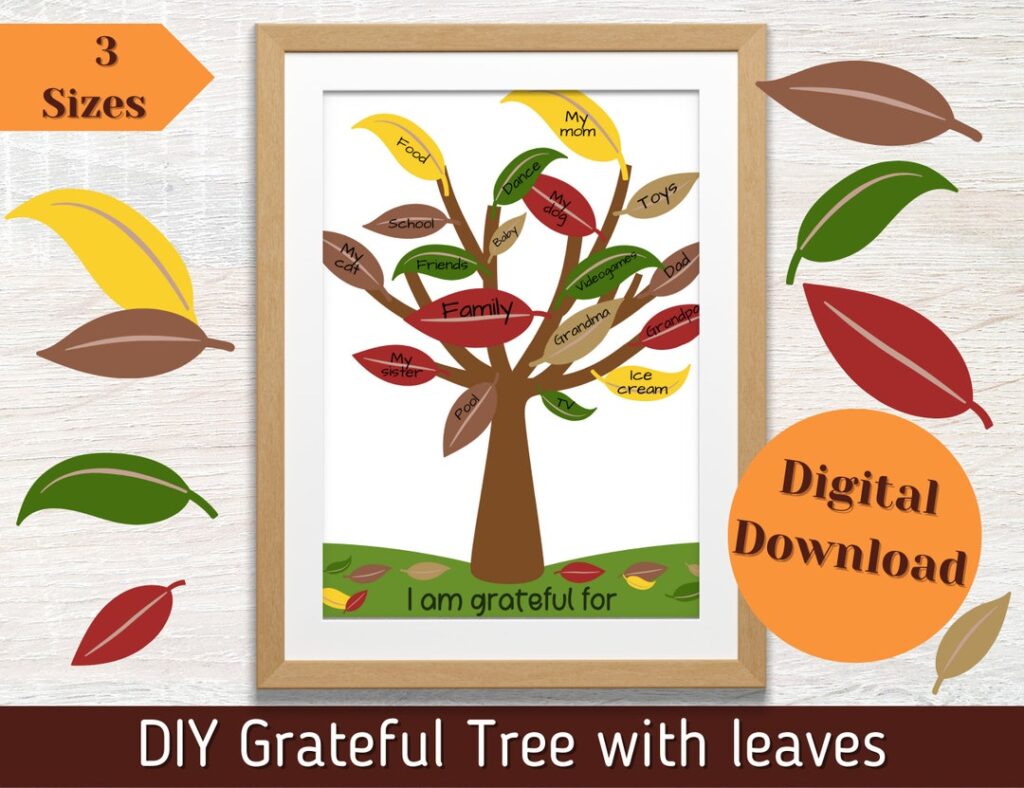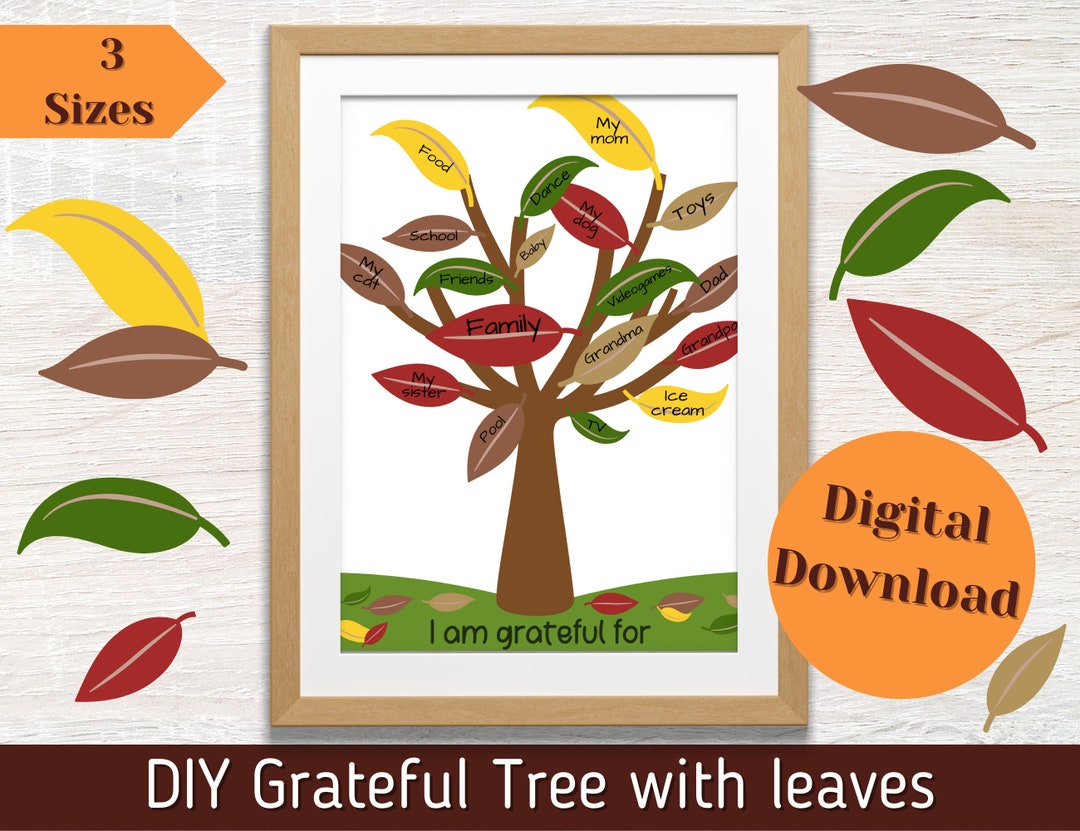
The Thankful Tree: A Thanksgiving Tradition of Gratitude
Thanksgiving is a time for family, feasting, and reflecting on the blessings in our lives. While turkey and pumpkin pie often take center stage, there’s a heartwarming tradition gaining popularity: the thankful tree. This simple yet profound activity encourages individuals and families to express their gratitude, fostering a deeper appreciation for the good things in their lives during this Thanksgiving season and beyond. The thankful tree can be a powerful visual reminder of all that we have to be grateful for.
What is a Thankful Tree?
A thankful tree is essentially a decorative display, often resembling a bare tree or a branch arrangement, adorned with notes of gratitude. These notes, typically written on paper leaves or tags, express what individuals are thankful for. The tree serves as a tangible representation of collective gratitude, growing fuller and more vibrant as Thanksgiving approaches and the days following. It’s a meaningful way to shift focus from material wants to the appreciation of existing blessings. This Thanksgiving, consider incorporating a thankful tree into your celebrations.
The Origins of the Thankful Tree Tradition
While the exact origins of the thankful tree tradition are difficult to pinpoint, its roots likely lie in a combination of factors. The act of expressing gratitude is an age-old practice found in various cultures and religions. The visual representation of gratitude, combined with the symbolic imagery of a tree representing growth and abundance, likely evolved organically within families and communities. Many believe it emerged as a secular alternative to religious expressions of thanks, appealing to a broader audience seeking meaningful ways to celebrate Thanksgiving. The thankful tree has quickly become a favorite Thanksgiving tradition.
How to Create Your Own Thankful Tree
Creating a thankful tree is a simple and enjoyable activity suitable for all ages. Here’s a step-by-step guide:
Gather Your Supplies
- The Tree: You can use a real branch (ensure it’s clean and dry), an artificial tree (small tabletop versions work well), or even draw a tree on a large piece of paper.
- Leaves or Tags: Cut out paper leaves from colored construction paper or cardstock. Alternatively, you can use pre-made gift tags or purchase leaf-shaped tags from a craft store.
- Writing Utensils: Pens, markers, or colored pencils.
- String or Ribbon: To hang the leaves or tags on the tree.
- Optional Decorations: Small Thanksgiving-themed embellishments like miniature pumpkins, gourds, or fall leaves.
Set Up Your Tree
Place your chosen tree in a prominent location where everyone can easily access it. If using a real branch, secure it in a vase or pot filled with sand or pebbles. If drawing a tree, tape the paper to a wall or easel.
Write Your Gratitudes
Invite family members, friends, or colleagues to write down what they are thankful for on the leaves or tags. Encourage them to be specific and heartfelt. Examples include: “I am thankful for my health,” “I am thankful for my family’s support,” or “I am thankful for the opportunity to pursue my dreams.” The act of writing down gratitudes is a key element of the thankful tree tradition.
Hang the Leaves
Using string or ribbon, attach the leaves or tags to the tree. As more people contribute, the tree will gradually fill with expressions of gratitude, creating a beautiful and inspiring display. The visual representation of gratitude is what makes the thankful tree so special.
Maintain the Tradition
Keep the thankful tree up throughout the Thanksgiving season and beyond. Encourage people to add new leaves or tags as they reflect on their blessings. You can even make it an annual tradition, bringing out the tree each year and adding to the collection of gratitudes. A thankful tree is a gift that keeps on giving.
The Benefits of Creating a Thankful Tree
Beyond its aesthetic appeal, creating a thankful tree offers numerous benefits:
Promotes Gratitude
The act of consciously identifying and expressing gratitude has been linked to increased happiness, reduced stress, and improved overall well-being. The thankful tree provides a structured way to cultivate this important practice. Regularly contributing to the thankful tree can significantly improve mental well-being.
Fosters Connection
Sharing expressions of gratitude with others can strengthen relationships and create a sense of connection. Reading the gratitudes of loved ones can foster empathy and appreciation. The thankful tree can bring families and friends closer together.
Creates a Positive Atmosphere
A thankful tree serves as a visual reminder of the good things in life, creating a positive and uplifting atmosphere in your home or workplace. It can shift the focus away from negativity and towards appreciation. The presence of a thankful tree can transform a room.
Teaches Children About Gratitude
Involving children in the creation and maintenance of a thankful tree is a valuable way to teach them about gratitude and the importance of appreciating what they have. It can help them develop a more positive outlook on life. Children especially enjoy contributing to the thankful tree.
Encourages Reflection
The thankful tree provides an opportunity for reflection and introspection. Taking the time to consider what you are grateful for can lead to a deeper understanding of your values and priorities. The thankful tree encourages mindful reflection.
Variations on the Thankful Tree Theme
While the basic concept of a thankful tree remains the same, there are many ways to customize it to suit your personal preferences and circumstances:
The Thankful Jar
Instead of a tree, you can use a jar or vase to collect notes of gratitude. This is a great option if you have limited space or prefer a more minimalist aesthetic.
The Digital Thankful Tree
Create a virtual thankful tree using online collaboration tools or social media. This allows you to share expressions of gratitude with a wider audience and connect with people from around the world.
The Traveling Thankful Tree
If you’re traveling for Thanksgiving, bring a small thankful tree with you and invite the people you meet along the way to contribute their gratitudes.
The Gratitude Garland
Instead of a tree, string together paper leaves or tags to create a gratitude garland that can be hung across a mantel or doorway.
Incorporating the Thankful Tree into Your Thanksgiving Celebration
The thankful tree can be seamlessly integrated into your Thanksgiving festivities. Here are some ideas:
- Make it a centerpiece for your Thanksgiving table.
- Dedicate a time during Thanksgiving dinner for everyone to share what they wrote on their leaves.
- Use the thankful tree as a conversation starter.
- Take photos of the tree throughout the Thanksgiving season to document its growth.
The Thankful Tree: A Year-Round Practice
While the thankful tree is often associated with Thanksgiving, the practice of expressing gratitude should be a year-round endeavor. Consider keeping your thankful tree up throughout the year and adding new leaves or tags as you reflect on your blessings. You can also create a new thankful tree each year, archiving the previous year’s tree as a reminder of past gratitudes. [See also: The Power of Gratitude Journaling] The thankful tree serves as a constant reminder to appreciate the good things in life, no matter the season. It’s a beautiful and meaningful tradition that can enrich your life and the lives of those around you. This Thanksgiving, embrace the thankful tree and cultivate a spirit of gratitude that lasts throughout the year. Make this Thanksgiving a memorable one with a thankful tree.

